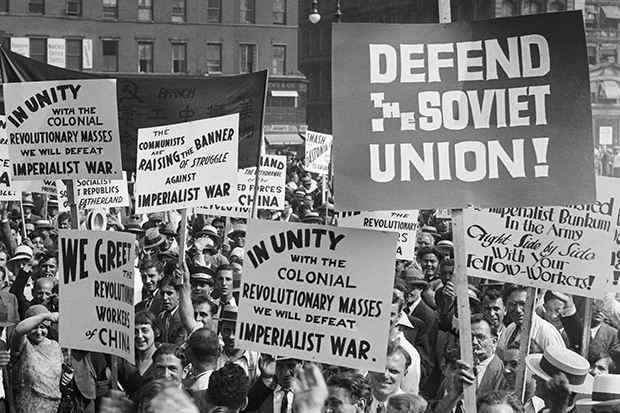Is today more reminiscent of the 1930s than 1960s?

Communists protest in New York City in 1932.
In the run-up to the presidential election, BrandeisNOW asked faculty to provide analysis and insight into some of the most pressing issues facing the country. Paul Jankowski is the Raymond Ginger Professor of History and author of “All Against All: The Long Winter of 1933 and the Origins of the Second World War.”

Last spring, the protests that followed the killing on camera of George Floyd focused attention yet again in the United States on its chronic and structural racial inequalities.
COVID-19 had already done so. Its incidence, like that of unemployment, poverty and any number of social ills, fell heavily on African Americans, among other people of color. So too did the burden of the economic lockdown imposed to contain the spread of the virus.
Very quickly, the American moment of triple crisis, when discrimination, disease and deprivation divulged their complicity and their kinship, became a global moment as well.
Around the world, in cities just as multiracial as those in America -- in Birmingham, Auckland, Rio de Janeiro and others -- protesters took to the streets chanting the name of George Floyd in anger not at the inequalities of American society but at the racial stratification in their own.
The search for precedents, like that for origins, is always hazardous.
For a while, the unrest of 2020 revived memories of 1968. But the parallel is flawed. Neither urban insurrection nor generational revolt marks the daily and nocturnal marches of 2020. They are sui generis.
The protests appear to tear down the walls between nations. Yet meanwhile global fragmentation is deepening. Kindred grievances are erupting just as nations are turning their backs on one another.
In this sense the apt parallel is with the 1930s.
With its trade wars, populist or fascist dictatorships, crumbling democracies and deepening gloom, that decade has commanded a morbid fascination at least since the financial crash of 2008.
The parallels between then and now can be shaky, but the most valid among them is also the least noticed – the inward turn among nations, as they pull out of multilateral agreements, raise tariffs, threaten neighbors or close borders. Who has time for the outer world or supranational causes?
Such causes abounded in the early 1930s. Pacifism was one. The disarmament conference that opened in Geneva in 1932 attracted petitions and delegations from organizations representing some 200 million people. World government was another.
Communism, a new, poorly understood alternative to a capitalist system blamed for the global depression, was yet another. “The great light in the east” brought pilgrims from far and wide to Moscow, and in New York, the comrades took leave of each other with the hopeful words, “Meet me on the barricades.”
But transnational enthusiasms were no match for their rivals. The call of nationalism soon sounded everywhere, expansionist here, isolationist there, sometimes derided as “beggar-thy-neighbor” or “every man for himself” but widely heard by multitudes of followers.
In the United States, the turmoil beyond the shores hardly troubled the candidates or voters in the elections of 1932 and 1936.
An aversion to foreign distractions brought the curtain down on transnational causes of any kind. Increasingly, pacifism shed internationalism for isolationist trappings.
In the elections of 2020, talk of a world descending into chaos has once again vanished from the national discussion, just as race, the planetary environment and other global causes of the day seemed poised to bring it back. Will it ever return?
Categories: Humanities and Social Sciences, Research





